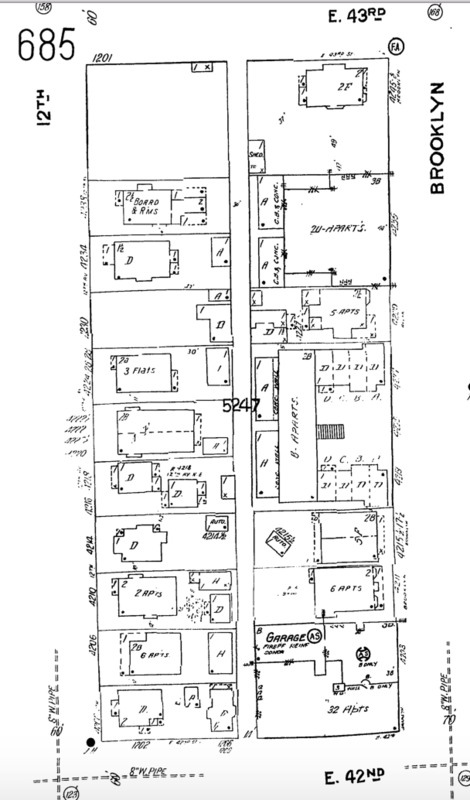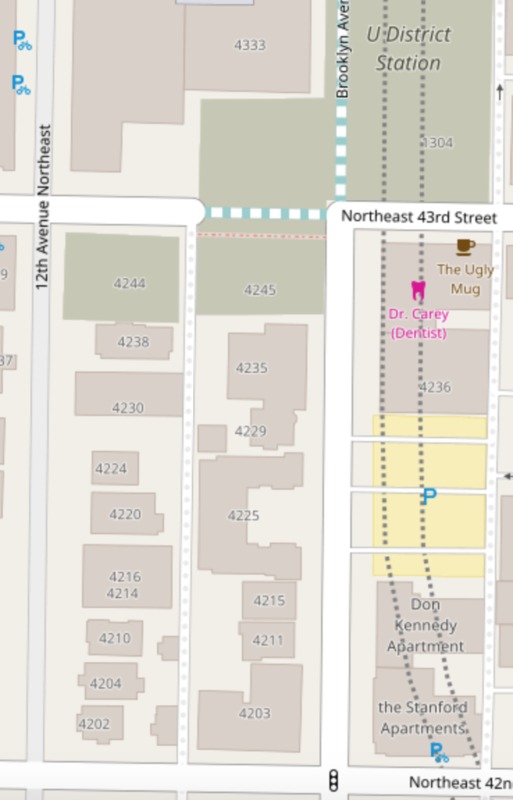Block 14 - Audio Tour

Most buildings remain the same since the 1920s.
On pages 43, 44, 45, 48, and 49, six professors' personal address of 4229 Brooklyn is displayed.
Ad for unit in 4230 12th Ave: "UNIVERSITY newer brick building, nice one bedroom. Colored appliances, drapes, carpeting, electric heat."

Present buildings on block and surroundings, including unopened subway station.
http://thatopinion.com/wp-content/uploads/2017/02/editblock14.mp3
Prior to European American development, block 14 contained forest, berries, and deer and elk that were hunted with snares and spears by the Coast Salish people. The plot was homesteaded by a settler named Christian Brownfield in 1873, and slowly developed with strawberry farms and sparse housing. In 1885, it became part of James Moore’s Brooklyn Addition, with a platted grid, dirt roads, and wooden sidewalks. The earliest standing house, 4229 Brooklyn Ave, was built in 1900, the decade that the block developed as single family housing. Although it looks like the rest of the city, almost immediately these houses became University focused: in 1903, six UW professors lived together in that house. Alpha Gamma Delta sorority documentation shows student Harriet Hibben lived at 4220 12th Ave at the time. Leading up to the Alaska Yukon Exposition, the streets were paved with wood planks, many of which were not modernized until the 1940s. Today, all single family-style housing on the block has been converted in city distinction as rooming houses and apartments for students. In the mid to late 1920s, three 16-36 unit apartment buildings opened, and in 1958 and 1961, some houses were replaced with two modernist apartment buildings that were advertised for their included colorful appliances, carpets, drapes, and electric heating, hallmarks of the era. A harrowing connection of local trauma, in the 1970s infamous serial killer Ted Bundy lived adjacent to block 14 in a student rooming house, and is the suspected rapist of a twenty year old woman that lived at 4220 12th in 1974. Street trees on the block are now mature and large compared to a 1937 aerial survey, a result of the continual and gradual growth of the nature we’ve let exist. Interestingly, the lot on the north west corner has never been developed, currently serving Link light rail construction vehicles. Contrasting the minimal physical change over time, the demographics have rapidly shifted. In 1960, the census tract was over 94% white. That’s evolved to 78% in 1990, 67% in 2010, and now just 53% in 2015. With no individual home owners and falling under an upcoming rezone, the block will likely face incredible change in the future as a new subway station opens, but there’s nothing to suggest the century precedent of being as much a part of the University as of Seattle will change.
